
Phân biệt Hoang mạc và Sa mạc
HOANG MẠC: vùng đặc trưng có khí hậu rất khô với những loài thực vật chịu hạn cao hoặc thực vật ưa khô hạn mọc rải rác. HM có nhiệt độ cao suốt mùa hạ (HM ôn đới) hoặc quanh năm (HM nhiệt đới). Lượng mưa năm thường không quá 200 mm. Lượng bốc hơi rất lớn: 900 - 1.500 mm ở mặt nước thoáng. Lớp đất trồng rất mỏng, nhiều nơi chủ yếu là đất xám và nâu sáng, nhiều chất muối dễ tan. Tuỳ theo tính chất đất, có 5 kiểu HM: HM đá, HM đất sét, HM cát, HM đất muối và HM đồi núi. Các dòng nước mặt chỉ có nước sau những trận mưa đột ngột và rất hiếm, nước đổ vào hồ hoặc ngấm hết dưới lớp cát. Tính ưa khô hạn cao là nét đặc thù của thực bì HM. Thực bì HM gồm những cây bụi thấp và cỏ, thích nghi theo ba hướng: cây hằng năm mọc nhanh, phát triển nhanh, ra hoa kết quả vào mùa mưa ngắn ngủi, hạt tồn tại trong mùa khô dài; cây lâu năm có bộ rễ ăn sâu, để hút nước dưới tầng đất sâu; cây mọng nước (vd. các loại xương rồng) có thể giữ nước trong mô, có lớp vỏ dày, có gai và các bộ phận khác bảo vệ. Động vật nghèo nàn, gồm những loài chịu được nóng, khát, thường sinh sống vào ban đêm, ban ngày trốn trong các hang hốc, một số ngủ qua mùa nóng. Ngoài ra, còn một kiểu HM đặc biệt: HM băng ở các miền cực.
Sa mạc: Với lượng mưa thường 0-25 mm/năm, nước ở sa mạc rất hiếm, thường không có sông và suối, sự sống hiếm hoi vì có rất ít loại động vật và thực vật có thể thích nghi với môi trường khắc nghiệt này, chỉ có ít những cây bộ gai, họ xương rồng chịu được khô cằn mới sống được ở vùng này. Khí hậu thường nóng có thể tới 58°C như ở sa mạc Mexico, Turfan (Thổ Nhĩ Kỳ) nhiệt độ ban ngày mùa hạ lên tới 82,3°C, có nơi lại lạnh đến –45°C như ở sa mạc Gobi thuộc Châu Á. Ở vùng sa mạc Sinai, biên độ nhiệt độ chênh lệch giữa ngày và đêm có thể đến hơn 80°C, đất đai cằn cỗi. Sa mạc thường có lượng bức xạ mặt trời lớn, nhiều cát và gió nóng luôn thổi mạnh tạo ra rất nhiều trận bão cát, hiện nay có khoảng 1/3 diện tích trái đất (lục địa) là sa mạc.
Người ta thường dùng lạc đà làm phương tiện di chuyển trong sa mạc
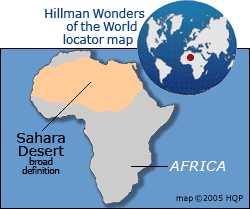 SAHARA
SAHARA KALAHARI
KALAHARI20 ốc đảo(Oasis) trong sa mạc đẹp nhất TG:
1.UBARI OASIS are part of Erg Awbari Oasis in the Sahara. Located near Fezzan and 30kms north of Germa in Libya, these salt water lakes are a central trading point for many locals, who gather at the edges of the lake selling souvenirs and other goods.
 Photo: sfivat. Ubari Lakes, Erg Awbari Oasis, Sahara Desert, Libya
Photo: sfivat. Ubari Lakes, Erg Awbari Oasis, Sahara Desert, Libya  Photo: 10 Ninjas Steve
Photo: 10 Ninjas Steve Umm Al-Maa, meaning Mother of Water, is one of the largest lakes in the oasis but unfortunately, like all the lakes, the water table in the area is so low that the lakes are drying up.
Umm Al-Maa, meaning Mother of Water, is one of the largest lakes in the oasis but unfortunately, like all the lakes, the water table in the area is so low that the lakes are drying up. Photo: 10 Ninjas Steve
Photo: 10 Ninjas Steve Photo: LucaG.
Photo: LucaG.Its location is near Fezzan and 30 km north of Germa, Libya.
While the water become dirty, salt levels are increasing even the same as in the Dead Sea. High salt in the lake Umm Al-Maa make floating is easy if you soak in here.
2.Huacachina Oasis, Peru: Hucachina is a small oasis town in the region of Ica, southwestern Peru. Oasis named ‘Oasis of Americas’ is a resort popular with foreign and domestic tourists. Local legend tells that the lake was formed when the young hunter disrupt a beautiful princess who was in the shower. Princess immediately went away leaving pools of water which later became a lake.
 Photo: unknown
Photo: unknown Photo: kanjiroushi
Photo: kanjiroushi Photo: Eric Bronder
Photo: Eric Bronder3. Turpan Oasis, China, or Tulufan, is an oasis city in the Xinjiang Uygur region, China. Is only 8 km west of the ruins of Jiaohe city, a border garrison area that was destroyed by Genghis Khan in the Han Dynasty.

4. Desert Lake Oasis in Maranhao, Brazil
This beautiful desert lake is located in Lençóis Maranhenses National Park, Maranhao, Brazil. Formed as part of a freshwater lake system that comes from rain during the first six months of each year and then will gradually evaporate and the water next year will rise again. In some of these lakes, there are palm trees, while others are just barren.
5.Al-hasa Oasis: Saudi Arabia

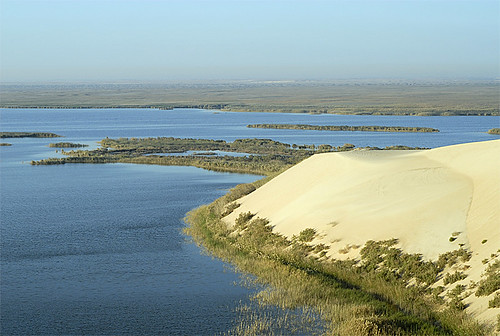
6.Nakhl Fort sits overlooking a lush, green date-palm oasis in Oman.
 Photo: loufi
Photo: loufi Photo: unknown
Photo: unknown7. The beautiful oasis of Chebika in Tunisia is probably one that most people know about without realizing it. It is where Star Wars Episode IV: A New Hope was filmed. The story goes that the oasis was actually named after one of the characters, Chewbacca.
 Photo: Bartek Kuzia
Photo: Bartek Kuzia Photo: Howard.Gees
Photo: Howard.Gees Photo: Howard.Gees
Photo: Howard.Gees8. Gaberoun (Libya)

Gaberoun is an oasis with a large lake located in the municipality Sabha in the Libyan Sahara. The old Bedouin settlement by the western shore of the lake has been abandoned, and now lays in ruins. A rudimentary tourist camp is located on the northeastern shore, including an open patio, sleeping huts, and a souvenir shop (attended by a touareg in full costume) in the winter.
The lake is very salty, swimming can be pleasant despite the salt water crustaceans. Mosquitoes are abundant, especially in the summer. October to May is considered the best time to visit as the climate is milder.
Former Gebraoun city that have left by the residents is not far from here with the impressive ruins of the building showed that the lakes was providing adequate living quality in the past.
 Photo: wikimedia commons
Photo: wikimedia commons9.Herðubreiðarlindir Oasis: Iceland
 On top of Herðubreið mountain, in the highlands of Iceland, this oasis is taking place in the Ódáðahraun desert. Created by the quake caused by the volcanic eruption of Trölladyngja mount. Here, there are many camps and also climbing camps area for tourists. This area used to be a disposal place for the dangerous
On top of Herðubreið mountain, in the highlands of Iceland, this oasis is taking place in the Ódáðahraun desert. Created by the quake caused by the volcanic eruption of Trölladyngja mount. Here, there are many camps and also climbing camps area for tourists. This area used to be a disposal place for the dangerous 10. This remote desert lake, fringed by sand dunes is located in Khar Nuur, Mongolia. It’s a refreshing swimming spot for travelers who manage to venture into one of the world’s vast desert plains.
 Photo: unknown
Photo: unknown11. Nahal David is a quiet oasis found near Bethlehem, Israel's Palestinian West Bank. It’s certainly a far cry from the war-torn images often associated with that part of the world.
 Photo: unknown
Photo: unknown12. This sprawling oasis is the village of Tinerhir, located at the foothills of Morocco's Atlas Mountains. Todra Gorge and oasis are about 14km away so travellers normally visit both oases on the one trip.
 Photo: jon keegan
Photo: jon keegan13. Ghardaia is the main town in M'zab oasis in northern Algeria. Founded in the 11th century, the city was built around a cave which was reputedly inhabited by the female saint Daïa, and is still revered by M'zabite women today. The oasis offers some wonderful examples of original Arabic medieval architecture and is now a protected UNESCO World Heritage site.
 Photo: Addounya
Photo: Addounya Photo: Masen
Photo: Masen14. This castle is part of an oasis on the western shore of the Persian Gulf in Saudi Arabia, called Qatif. The city dates back to 3,500 BC and was for many years the main town and port in the western Gulf, which meant it was a popular spot for invasion and take over by ruling powers through the ages. This resulted in an eclectic mix of architecture and the area now boasts some of the best archeological sites in the kingdom.
 Photo: Alib_ahj
Photo: Alib_ahj  Photo: unknown
Photo: unknown15. Crescent Lake Oasis, Gobi Desert: China
This desert lake located on the edge of an ancient city that can be found in the journey along the Silk Road to the West. It have started to dry up and down more than 25 feet during the last 30 years because it is used directly by farmers and a growing population. This resulted in gradual disappearance of this lake that have existed for thousands of years.
 Crescent Lake Oasis, Gobi Desert
Crescent Lake Oasis, Gobi Desert16. Oman Desert Oasis, Oman: This green oasis hidden in the desert of Oman. Some oasis in the Sultanate of Oman is often used as a botanical studies in the field of agro biodiversity to know why many of the ancient oasis are in rapidly decline.
17. Timia Oasis, Sahara Desert, Niger
Timia oasis located in Air Mountains (northern Niger), is the most beautiful oasis in this country for a reason. Not only because the picture of a lake in the middle of the desert with some palm trees, but in the oasis there is also lush gardens with orange trees and pomegranates are ready to be picked and eaten there (with paying of course).
Some types of tree fruits, cereals, and vegetables are also grown here. Harvest even sent to other regions in Niger.
18. Chebika Oasis: Tunisia
This beautiful oasis is probably the most widely oasis seen people without people knowing it. This is where the location of filming Star Wars Episode IV: A New Hope. Eventuallym the oasis name taken from one of the characters in the film, that is Chewbacca.
19. Ein Gedi Oasis, Israel Oasis of En Gedi is the largest along the coast of the Dead Sea. This area inhabited by Judah tribe and has been famous since the time of the kingdom of Solomon.
20.Oasis of the Stone

One of the most beautiful and fragile landscapes in our hemisphere is Mexico’s Baja California Peninsula
5 sa mạc đẹp nhất TQ:
 #1. Badain Jaran desert
#1. Badain Jaran desertThe Badain Jaran desert is the fourth largest desert in the world roughly 150 kilometers north of the Hexi corridor and covering an area of over 49,000 square kilometers. It is home to the largest dunes on earth.

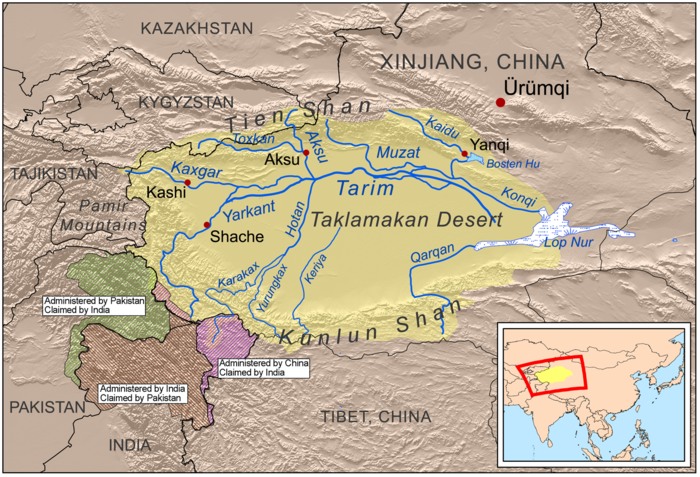 #2. Taklamakan Desert
#2. Taklamakan DesertThe Taklamakan Desert, lying in the center of the Tarim Basin and covering some 337,600 sq meters, is the biggest desert in China and the second largest shifting sand desert in the world. Between the Keriya River and the Hotan River in the heart of the desert, the vast sea of sand stretches to the horizon.

 #3. Gurbantunggut
#3. GurbantunggutThe Gurbantunggut lies in Xinjiang Junggar Basin. Some 48,000 sq meters in area, it is China’s second largest desert. Fixed or semi-fixed sand ridges cover 97 percent of the desert. Some 100 plants grow in the desert, many of which make good sand-fixing plants and pasture grass. About a quarter of the annual precipitation falls in winter.

 #4. Booming Sand Dune and Crescent Spring
#4. Booming Sand Dune and Crescent SpringThe Booming Sand Dune and Crescent Spring, five kilometers southwest of Dunhuang City, create an amazing desert view. The dune’s name (Mingshashan) comes from the booming noise made by the sands when people climb up. The Spring’s name (Yueyaquan) comes from its crescent form, cradled in the dunes.

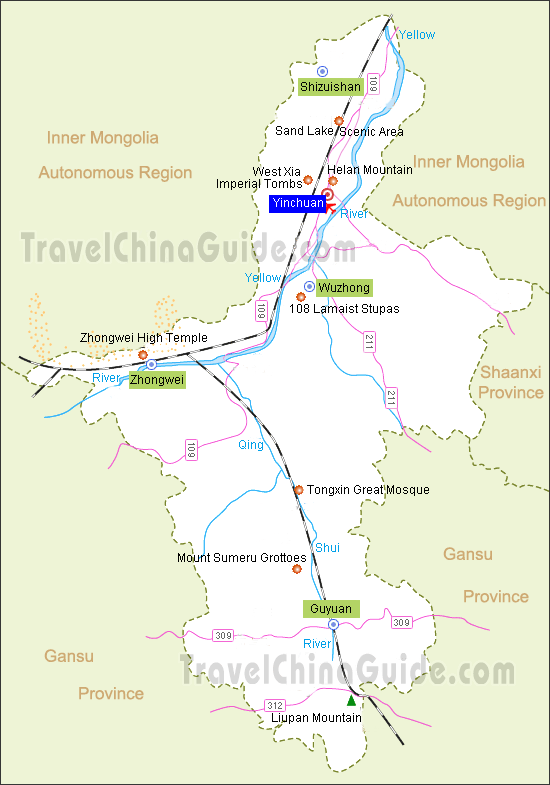 #5. Shapotou
#5. ShapotouShapotou means Sand Slope Head, this name coming from the 2,000-meter-wide and 100-meter-high sand riverbank. Shapotou lies on southeast of the Tengger Desert and north of the Yellow River.





10 sa mạc kỳ vĩ nhất thế giới
Nơi bao phủ một màu trắng toát, nơi lại rực đỏ, và có nơi chứa đầy hồ nước, đó là những sa mạc ấn tượng nhất trên thế giới.
 |
| Sa mạc Taklamakan ở Tân Cương, Trung Quốc, là một trong những sa mạc cát rộng nhất thế giới. Năm 2008, một trận mưa tuyết kéo đài 11 ngày đã biến sa mạc thành một bãi biển trắng toát. |
 |
| Sa mạc Lencois Maranhenses tại Brazil có rất nhiều hồ nước mặn. Mặc dù chứa 14% lượng nước ngọt của thế giới và có khu rừng nhiệt đới lớn nhất thế giới, Brazil vẫn vinh dự là một trong những nơi có sa mạc đẹp nhất. Hằng năm từ tháng 7 đến tháng 9, các cơn mưa nặng hạt lại tạo nên hàng nghìn chiếc hồ trên sa mạc. Các đụn cát trắng cùng với làn nước xanh khiến du khách phải tự hỏi mình đang trong sa mạc hay bên bờ biển. |
 |
| Sa mạc Uyuni, Bolivia, là sa mạc hồ nước mặn lớn nhất thế giới. Nằm ở vùng cao nguyên ở miền nam Bolivia, bao phủ diện tích 12.000 km2, Uyuni có 65 tỷ tấn muối cùng rất nhiều thảm muối trải rộng. Bề mặt hồ phản chiếu ánh nắng mặt trời như gương và lòng hồ lấp lánh màu sắc bởi những khoáng chất nằm ở dưới đáy. Nhưng nằm ở độ cao 3.700 m và không có cư dân sinh sống, rất khó để tiếp cận nơi này. |
 |
| Sa mạc Farafara ở Ai Cập, ngược với màu vàng ở hầu hết những nơi khác, sa mạc cát nằm ở phía bắc Ai Cập lại có màu trắng kem hấp dẫn. |
 |
| Sa mạc Atacama ở Chile nằm trên một vùng đất gần như không có mưa của Nam Mỹ. Đây được coi là sa mạc khô cằn nhất thế giới. Kỷ lục hạn hán kéo dài 400 năm đã được ghi nhận tại đây, từ cuối thế kỷ 16 tới năm 1971. |
 |
| Sa mạc Namib ở Namibia nằm ở bờ biển phía tây nam châu Phi, được coi là cổ xưa nhất thế giới. Du khách có thể bắt gặp nhiều hóa thạch động vật và thực vật, cùng những đụn cát cao tới 300 m - cao nhất thế giới. |
 |
| Sa mạc Simpson ở Australia nổi bật với màu đỏ rực, do chất oxit sắt nằm trong cát biến thành bột và hòa lẫn với hạt cát. Dưới ánh nắng, sa mạc bất tận trông như đám lửa bập bùng. |
 |
| Sa mạc Đen ở Ai Cập nằm ở vùng được hình thành do phun trào núi lửa, cách sa mạc trắng Farafara 100 km về phía đông bắc. Nơi đây được bao phủ bởi những hòn đá đen nhỏ. |
 |
| Sa mạc Nam cực có độ ẩm lớn nhất. Lượng mưa trung bình ở Nam cực chưa tới 5 mm, nhưng đồng thời, 98% vùng đất được bao phủ bởi băng và tuyết. Kết quả là thời tiết khắc nghiệt ở đây vừa khô, ẩm, lạnh khiến con người không thể sống được. |
 |
| Sahara, sa mạc rộng nhất thế giới, chiếm 9 triệu km2, Sahara bao phủ phần lớn Bắc Phi và là nhà của nhiều bộ tộc khác nhau. Sa mạc kéo dài từ Biển Đỏ cho tới Đại Tây Dương. |
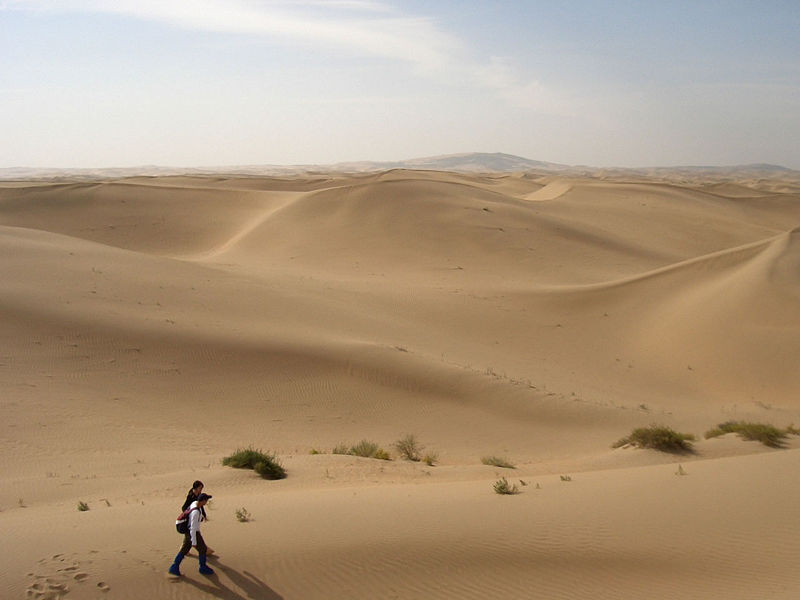
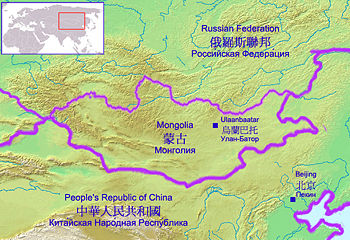 GOBI
GOBI
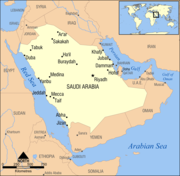 ARABIAN DESERT
ARABIAN DESERT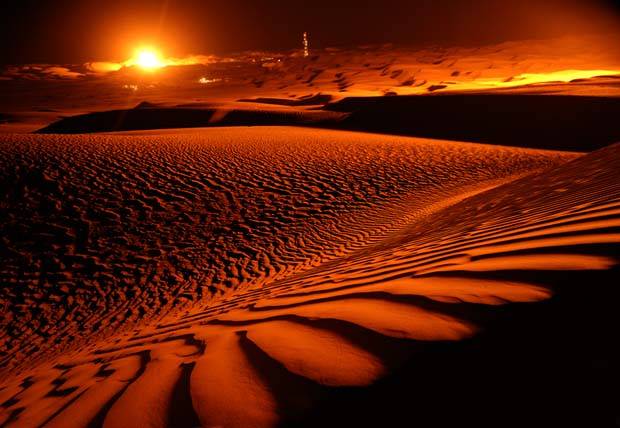
 TAKLAMAKAN
TAKLAMAKAN



















No comments:
Post a Comment